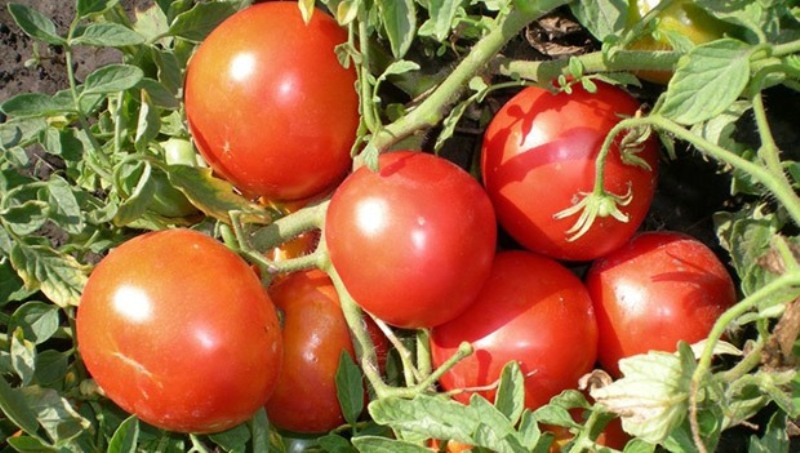 Tomato The Mongolian dwarf is a surprisingly unpretentious, early and cold-resistant tomato variety that will appeal to both gardeners new to and gardeners with experience.
Tomato The Mongolian dwarf is a surprisingly unpretentious, early and cold-resistant tomato variety that will appeal to both gardeners new to and gardeners with experience.
Tomato can be planted in almost any soil, as it is unpretentious to the composition of the soil, calmly tolerates temperature fluctuations, does not require much complicated care.
Content
Origin and zoning
This variety is especially popular among the vegetable growers of Transbaikalia and Siberia; it was supposedly bred by scientists-breeders from Novosibirsk, but has not yet been included in the State Register of Selection Achievements of the Russian Federation. For this reason, tomato seeds are difficult to find in the public domain, however, planting material can be purchased on the Internet or on the market from familiar vegetable growers.
The Mongolian dwarf feels good and grows safely in the regions of the north with cold spring and autumn. Perfectly takes root in places with an arid climate and constant winds, provided there is no late blight.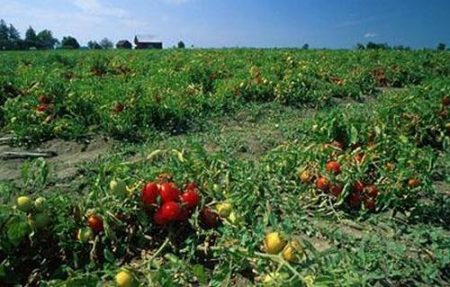
Positive qualities of the tomato variety Mongolian dwarf and its characteristics
The Mongolian dwarf has many advantages and has the following characteristics:
- a low-growing variety, has the property of spreading on the ground - in the height of the bushes from 15 to 25 cm, in width - up to 1 meter;
- stable and high productivity - from one bush you can collect up to 10 kg of tomatoes;
- tomato does not need to be tied up and stepsoned;
- unpretentious to the composition of the soil, grows better on the street than in the greenhouse, likes fresh air and does not tolerate excess moisture;
- rather large fruits - the weight of one tomato is on average about 200 grams;
- bears fruit until late autumn and the first frosts;
- round shape, the taste of tomatoes is sour and not particularly sweet;
- color is bright red.
Some disadvantages of the tomato variety Mongolian dwarf
Despite the good characteristics of the variety, a large number of advantages, nevertheless, some disadvantages of this type of tomato can be highlighted: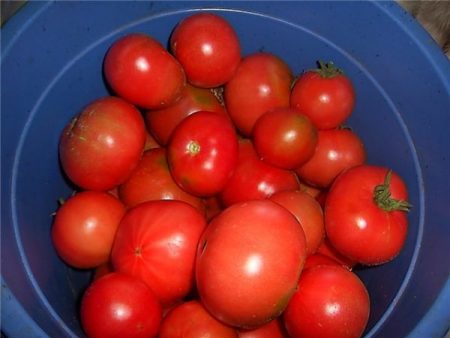
- It is difficult to get seeds, there are risks of substitution, since when buying seed on the Internet, you can not always be sure of its quality and whether it is really the seeds of the Mongolian dwarf. There are no guarantees when buying seeds from individuals.
- A long period of the initial phase of seedling formation. But as soon as the first seedlings show up from under the ground, the growth of the tomato intensifies, a bush, ovaries and stepsons begin to form intensively.
- It does not get along in acidic soil and heavy soil, does not like heat and humid climate. Under such conditions, it will yield very few fruits.
Features of cultivation and care of the variety
Unpretentious tomato variety The Mongolian dwarf will especially please lazy gardeners, since it does not require special care. This type of tomato needs the same amount of attention as other varieties: regular watering, weeding, weed removal, fertilizing with fertilizers.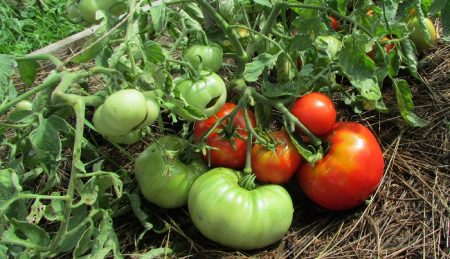
Cultivation of the Mongolian dwarf: planting dates for seedlings, ripening speed
This type of tomato can be sown starting in February, as well as in March and early April. The first fruits can be seen in June. Germination in seeds of the Mongolian dwarf is good, about 40-60%.
You can check the seeds for quality in the following way: soak them in a solution of sodium chloride and wait 5 minutes, during which the bad seeds will float up, and the healthy ones will fall to the bottom. You can throw the first ones without hesitation.
Soil for landing will suit almost anyone. You can use purchased soil from specialized stores, turf soil, humus, land from the garden. However, it is recommended to heat the land from the site (at 200 degrees in a steam bath or in the oven) and thereby neutralize.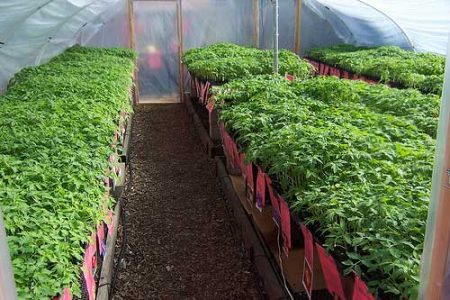
On average, a month after planting, the size of the plant will be 7-8 cm in height and the first five leaves will appear. When 10 or more leaves appear, the plant will begin to form stepsons. Diving seedlings are allowed after the appearance of the 3rd strong present leaf.
While the Mongolian dwarf is growing, it is recommended to water it as necessary, and in no case to prevent waterlogging of the soil, as this will adversely affect the yield and quality of tomatoes. After watering, the soil needs to be loosened to avoid the formation of a hard crust on the soil. Fertilizing tomatoes with fertilizers increases the amount of yield. The first time you need to fertilize the plant after 2-3 weeks after planting in the ground, and the next - during the ripening period.
Mongolian Dwarf Diseases
This variety has good disease resistance. However, do not neglect the safety of the plant and its harvest, as there are still small risks of infection of the tomato with late blight. This fungal disease can be identified by brown spots on the leaves of the plant, its fruits and the appearance of a white coating on it.
Blight is formed in places with high humidity and lack of air. He is able to quickly destroy plants and fruits. To combat this ailment, it is first necessary to carry out prophylaxis and treat the tomato bushes with Fitosporin, Trichodemin and other microbiological preparations.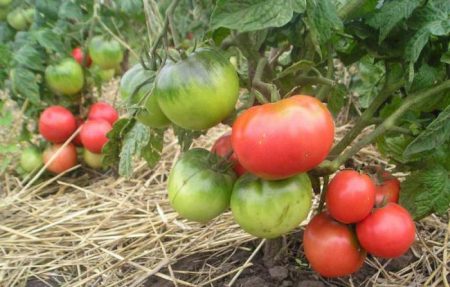
Collection and storage of fruits
You can collect the fruits of the Mongolian dwarf, as in the stage of milk maturity, allowing them to ripen in a warm place, as well as ripe and juicy tomatoes. The tomato can be stored for a long time, and it also withstands transportation. Due to the fact that the tomato has a pronounced sour tomato flavor without much sweetness, it is good to use both in salads, and in pickling and preservation, suitable for heat treatment (you can stew and prepare sauces). The Mongolian dwarf is good at harvesting, it produces delicious tomato juice and ketchups.
Reviews
Valentina Vasilievna, 56 years old, Kazan
Last year, I decided to plant a Mongolian dwarf in a greenhouse. He got a place, so to speak, on the residual principle - not particularly successful. He grew in my shadow at the north wall. However, even after all my mockery of him, he was able to give a decent harvest. I collected fruits on average about 150 grams. On the palate, they were sour, however, after lying down, the acid became less. Very pleased with the vitality of the variety!
Angelina Mikhailovna, 45 years old, Nizhny Novgorod
I really liked the "dwarf". Last year, I landed it for the first time and this year I will definitely continue to land. His bush is compact, easy to plant, can be attached between tall bushes. Tomatoes were decent in appearance, weight and taste.
Alexey Nikolaevich, 49 years old, Ryazan
Mongolian dwarf is a very unpretentious variety. My seeds germinate very well. This is probably because I use my planting material, which I carefully collect in the fall.Never stepson, feed with nitrogen and get a lot of harvest.




 Low-growing tomatoes, without pinching: 5 of the most delicious varieties
Low-growing tomatoes, without pinching: 5 of the most delicious varieties Why tomato seedlings grow poorly
Why tomato seedlings grow poorly We grow a tomato in a shell
We grow a tomato in a shell Growing tomatoes without watering according to the method of Kazarin
Growing tomatoes without watering according to the method of Kazarin